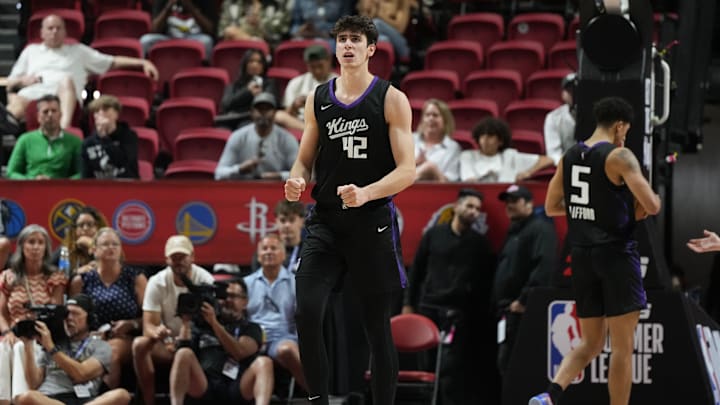The Detroit Pistons had two clear needs heading into the offseason. They are thin at backup point guard and power forward but chose not to address either of those needs with the 37th pick, instead taking sharpshooting wing Chaz Lanier.
Lanier was one of the best high-volume shooters in college last season, and at 23-years-old, there was some hope he could step into one of the roles vacated by Malik Beasley or Tim Hardaway Jr. at some point.
But after trading for Duncan Robinson and signing Caris LeVert, there won’t even be many minutes left for guys like Marcus Sasser and Paul Reed, who are both far more established players than a second-round rookie.
Lanier’s lackluster Summer League didn’t help his cause, and it now looks like a long shot that he’ll see any kind of meaningful action next season unless something wild happens.
It was going to be difficult for any wing player to crack this rotation, as the Pistons already have Cade Cunningham and Jaden Ivey to go along with LeVert, Robinson, Sasser, Ausar Thompson and Ron Holland II, who will all be getting minutes on the wing.
If a rookie were to have any chance at rotation minutes next season, it would have been more likely for a power forward, which is why the Pistons’ choice of Lanier was somewhat baffling.
Should the Detroit Pistons have drafted a big man?
Trajan Langdon was clear that he wasn’t going to draft for need in the second round but would just take the player he thought had the best chance of playing in the NBA at some point.
Lanier may end up being that guy, as it’s far too early to write him off after a couple of mediocre Summer League games. Guys who are accurate from 3-point range will always have a shot to crack the back end of a rotation even if they can’t do anything else, which appears to be the case with Lanier.
I admittedly was hoping the Pistons would draft Maxime Raynaud, a seven-foot-one forward out of Stanford who hit 35 percent of his 3-point attempts in his final year of college.
Raynaud had a solid Summer League, averaging 12.8 points, six rebounds, 1.4 assists and a block per game on 49 percent shooting overall.
Like Lanier, Raynaud didn’t shoot the ball well from long range, but he has more to offer as an all-around player and would have potentially had a chance to get into the rotation, as they are thin at power forward and could use some size there, although there are big questions about his abilitiy to defend at an NBA level.
It’s far too early to know anything, as Lanier may end up shooting his way onto the bench at some point and Raynaud may disappear into the Summer League ether, but given their roster needs, a big power forward would have had a better shot of making an impact early in his career.
